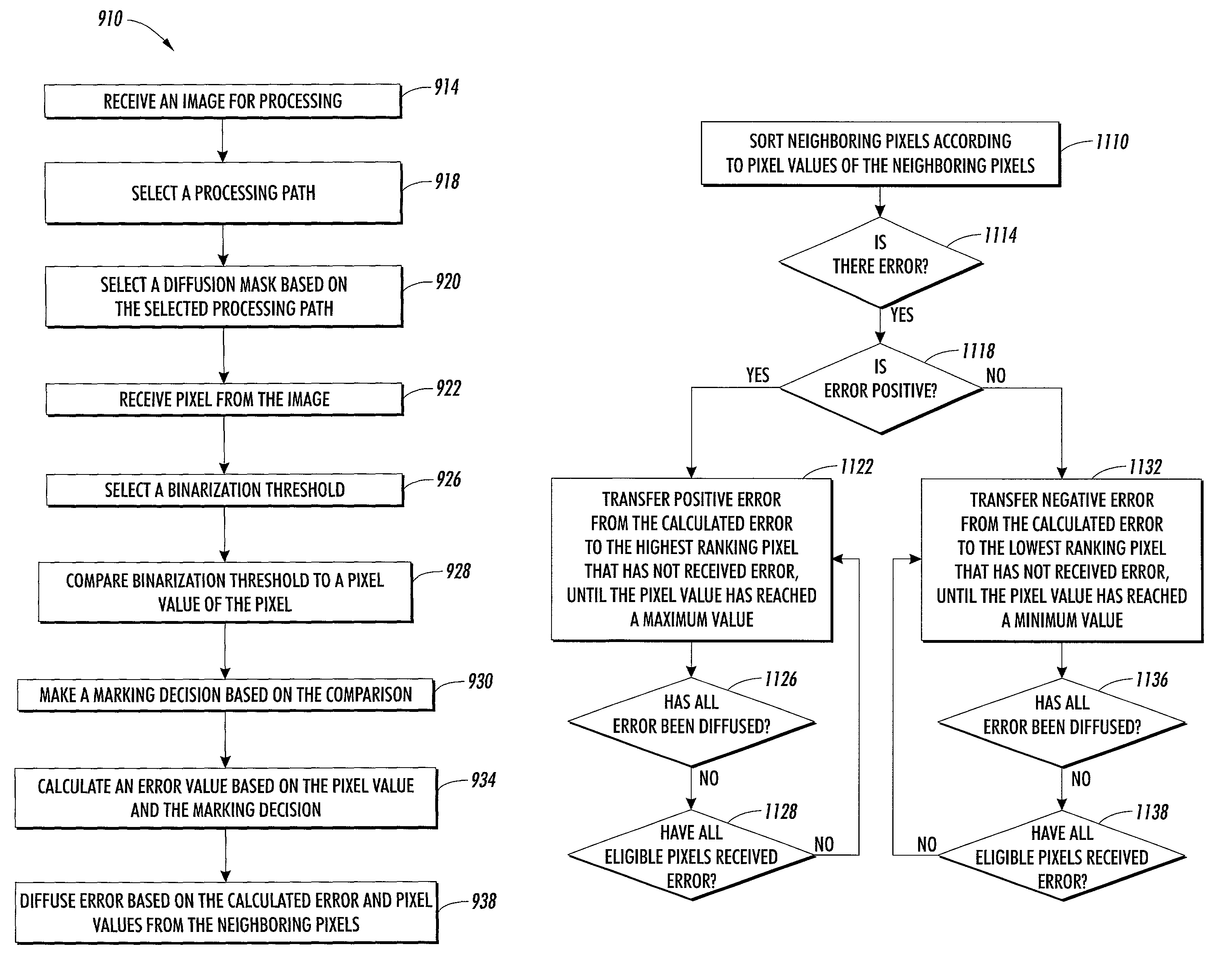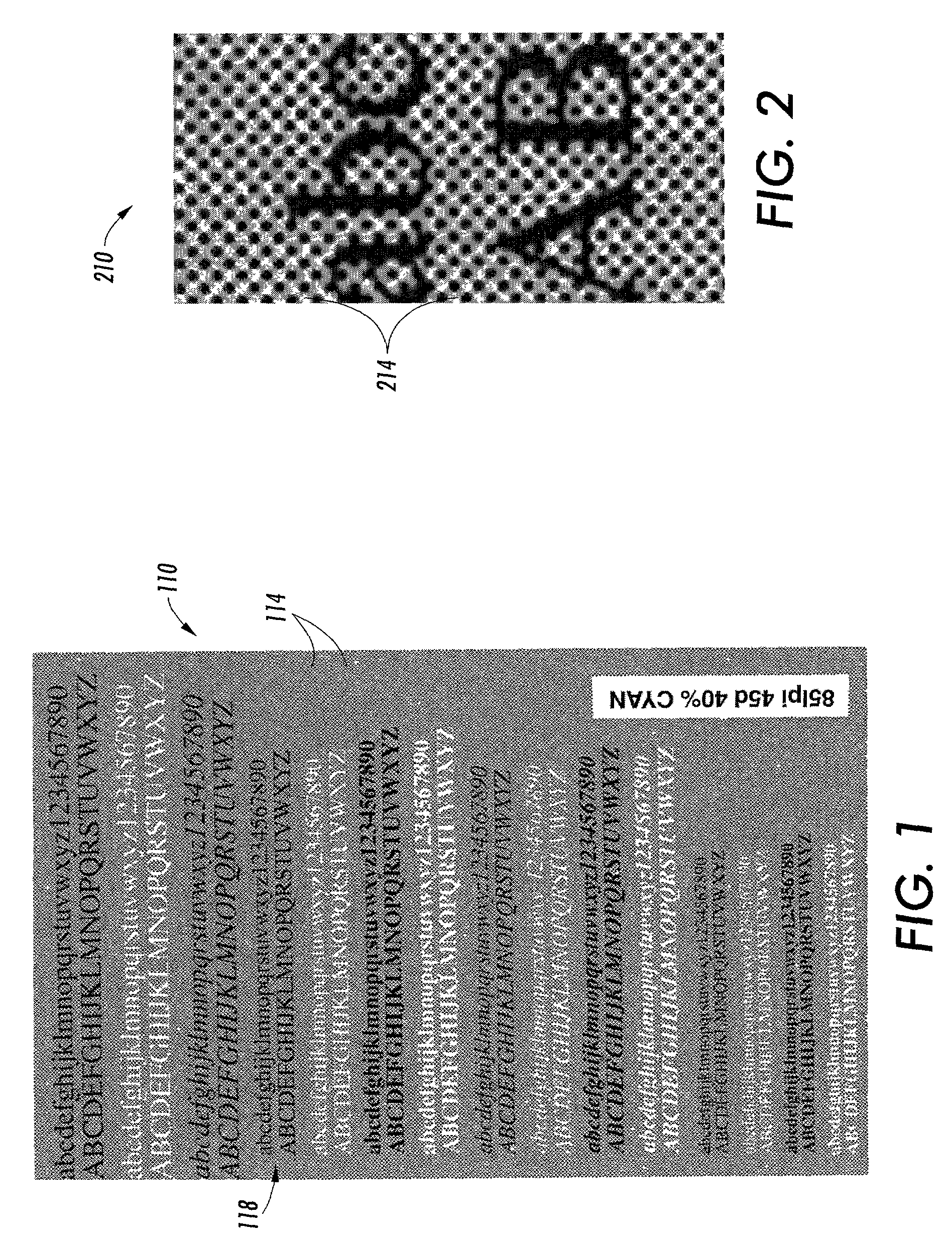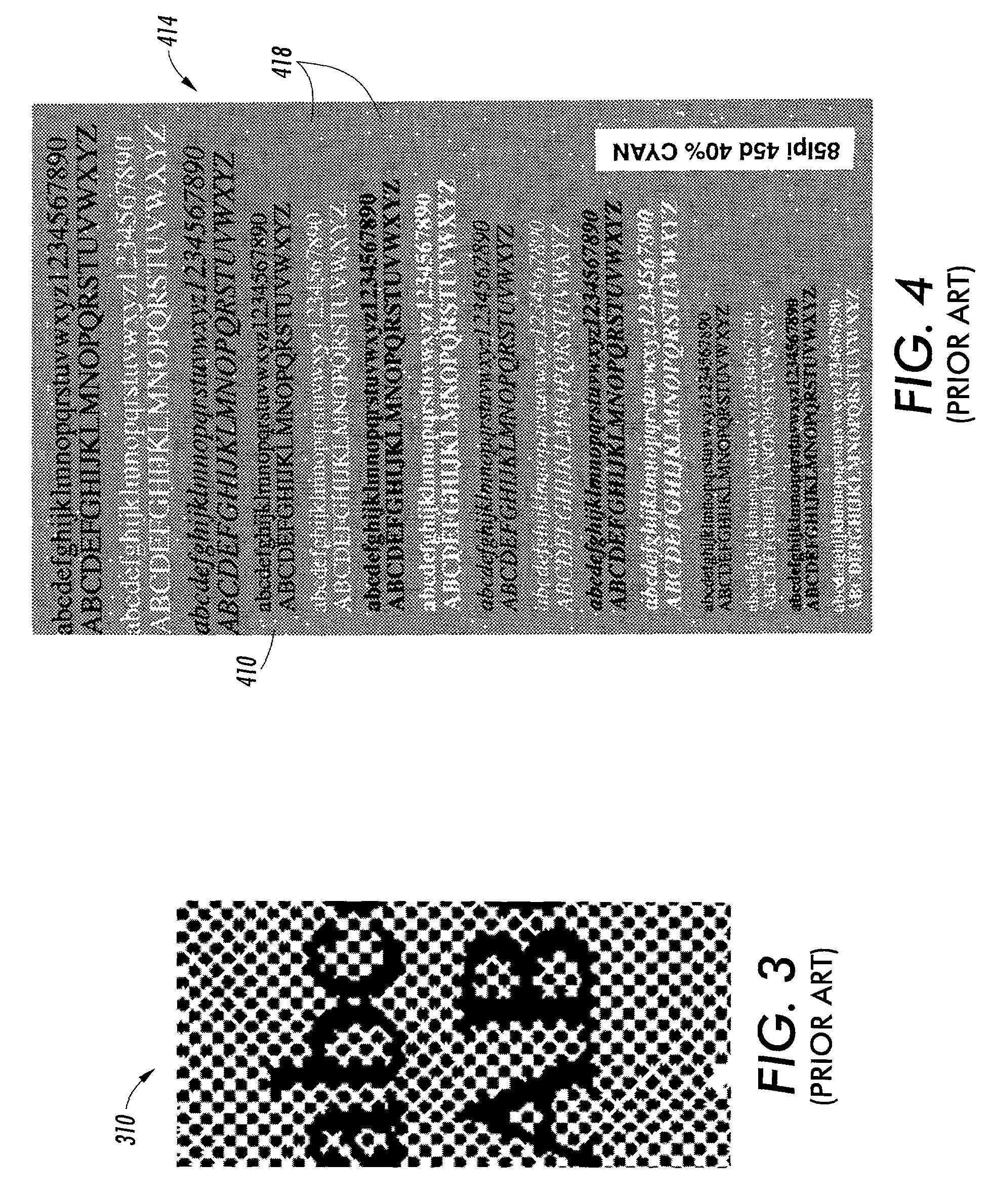Rank-order error diffusion image processing
a diffusion image and rank-order error technology, applied in image enhancement, digitally marking record carriers, instruments, etc., can solve problems such as unacceptably large gray errors, objectionable moiré patterns, and inability to achieve uniformity, reduce or eliminate patterning artifacts, and improve temporal stability and spatial uniformity.
- Summary
- Abstract
- Description
- Claims
- Application Information
AI Technical Summary
Benefits of technology
Problems solved by technology
Method used
Image
Examples
first embodiment
[0051]Referring to FIG. 11, in a first embodiment, diffusing error 938 to neighboring pixels within the selected diffusion mask, based on the calculated error and pixel values of the neighboring pixels includes sorting neighboring pixels 1110 (pixels within the diffusion mask) according to pixel values of the neighboring pixels. In other words, the neighboring pixels are ranked according to darkness or lightness as represented by the numerical pixel values of the pixels. For example, the darkest pixel or the pixel with the highest value is given the first rank or ranked number one. The lightest pixel, or the pixel with the lowest pixel value is given the last rank or a rank of the highest number.
[0052]An error check 1114 determines if the calculated error value is non-zero. If the calculated error is non-zero processing proceeds. If the calculated error value is zero then there is no error to diffuse and processing is diverted to waiting for a new pixel to process.
[0053]A sign check...
fourth embodiment
[0073]The fourth embodiment 1410 also includes distributing positive error and distributing negative error. However, in the fourth embodiment distributing positive error includes distributing positive error to neighboring pixels based on the assigned positive weights of the pixels as limited by a maximum value 1418. Positive error is distributed to neighboring pixels as described in reference to the third embodiment 1310, except where a distribution of error to a pixel would cause the value of the pixel to exceed some maximum value.
[0074]For example, in a system where an eight-bit value is used to represent gray levels ranging from 0 to 255, 255 may be a maximum value allowed for a pixel. In such a system, where the exemplary positive diffusion weights of fifty, thirty-two and eighteen percent are assigned to the first, second and third ranked pixel, and where a calculated error value is, for example, 100, and where the first ranked pixel has a pixel value of 220, the second ranked ...
PUM
 Login to View More
Login to View More Abstract
Description
Claims
Application Information
 Login to View More
Login to View More - R&D
- Intellectual Property
- Life Sciences
- Materials
- Tech Scout
- Unparalleled Data Quality
- Higher Quality Content
- 60% Fewer Hallucinations
Browse by: Latest US Patents, China's latest patents, Technical Efficacy Thesaurus, Application Domain, Technology Topic, Popular Technical Reports.
© 2025 PatSnap. All rights reserved.Legal|Privacy policy|Modern Slavery Act Transparency Statement|Sitemap|About US| Contact US: help@patsnap.com



